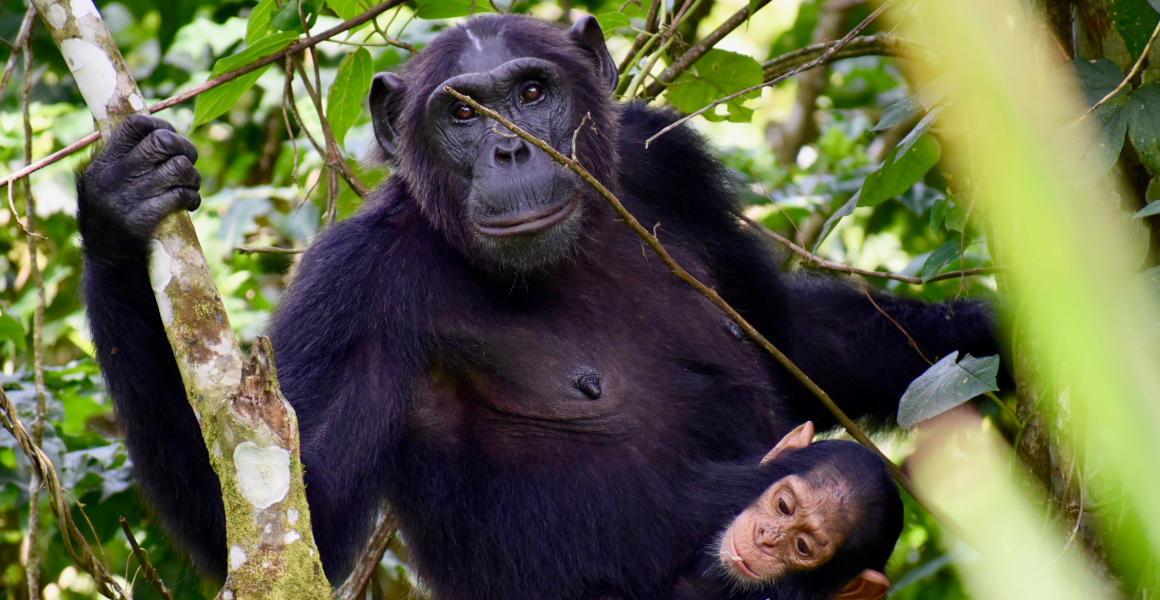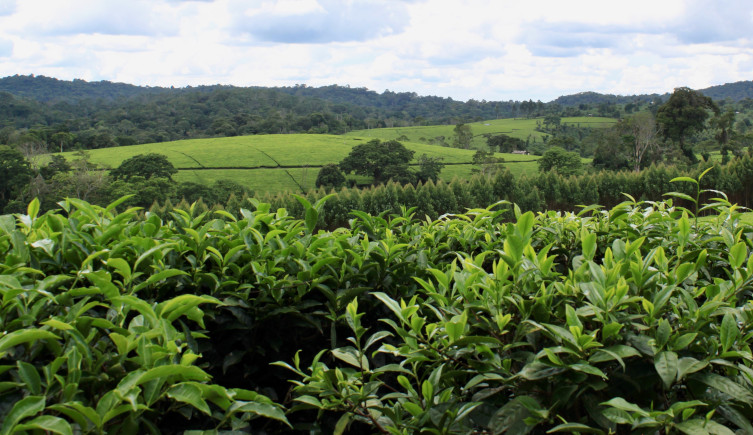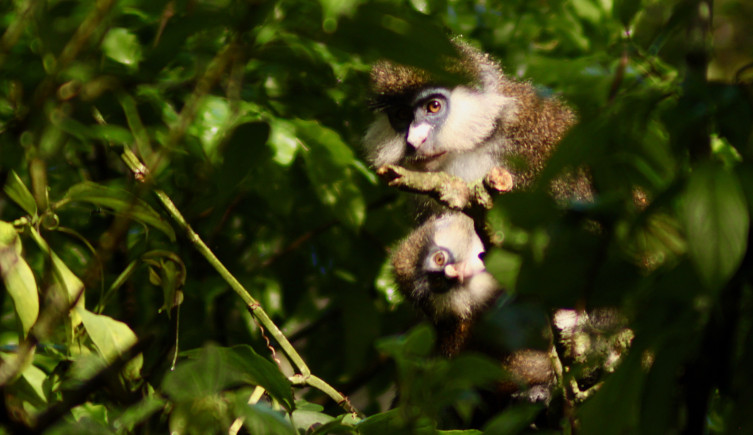Wild chimpanzees are being exposed to a cocktail of harmful chemicals.
Pesticides and flame retardants are among the pollutants found in their faeces, suggesting that the chemicals may be having an impact on the primates' health and development.

Chemical pollution had the most significant impact on female and juvenile primates. Image © NRRSander/Shutterstock.
Wild chimpanzees are being exposed to a cocktail of harmful chemicals.
Pesticides and flame retardants are among the pollutants found in their faeces, suggesting that the chemicals may be having an impact on the primates' health and development.
Primate poo is revealing how pollutants are affecting threatened species in the wild.
A new study found that the faeces of four primate species living in Uganda's Kibale National Park, including chimpanzees and red colobus monkeys, contained significant levels of pesticides and flame retardants.
Female primates and their young were found to be the most affected, with the researchers linking the pollutants with higher levels of stress and reproductive hormones in these animals. This suggests the compounds might be disrupting how their body functions and potentially affecting their growth and development.
Tessa Steinicheopens in a new window, a PhD student and lead author of the study, says, 'Endocrine disruption in juveniles is especially concerning because exposure to these chemicals during critical periods of development can have a really lasting impact.'
The researchers warn that the chemicals featured in this study may be just the tip of the iceberg, with more compounds likely to be impacting these primates.
'Unfortunately for these primates the benefits of inhabiting a 'protected' area do not really include protection from chemical pollution,' Tessa adds. 'Human activity around the park, and even tourism and research within it, can all introduce potentially harmful chemicals.'
'It's likely our study only scratches the surface on the suite of chemicals these primates are encountering.'
The findings of the paper were published in the journal Biology Lettersopens in a new window.

Kibale National Park in Uganda covers hundreds of square kilometres, and contains 13 primate species. Image © Tessa Steiniche.
Over the past century, there has been an unprecedented rise in pollution across the planet. From microplastics in the Arctic and inside our bodies, to sewage in our rivers and seas, the issue affects our lives on a scale we're yet to fully comprehend.
Of the many different types of pollution, chemical pollutants are perhaps the best understood. A variety of studies over the years have revealed the effects they can have on life at a variety of scales.
The growth of algae, for instance, can be harmed by antibiotics in water by limiting their ability to carry out photosynthesis.
At the other end of the scale, killer whales are known to be affected by chemicals such as polychlorinated biphenylsopens in a new window (PCBs), a group of chemicals formerly used as coolants. These can interfere with the animal's immune system and reproduction as they build up in the orca's blubber.
But the methods behind such earlier research have been problematic. Historically, these studies have used laboratory experiments which can overlook how mixtures of the chemicals affect health or relied on samples from dead animals which can have much higher levels of pollutants than average.
More recently, scientists have been trying to account for these issues by turning to biomonitoring techniques allowing them to study wild animals in their own habitat.
In the current study this meant taking poo samples from four species of primate living in Kibale National Park, including chimpanzees, olive baboons, red-tailed monkeys and the Ugandan red colobus. This allowed the researchers to measure levels of not only the pollutants themselves, but also the hormones they might affect.
'Toxicology has been undergoing a renaissance over the past few decades towards improving animal ethics, and faecal biomonitoring can offer a really valuable approach,' Tessa says. 'While faecal samples aren't exactly the cleanest matrix to work with, the opportunity to study the impacts of pollution in wild animals without any sort of harm or manipulation is pretty neat.'

All primates in the study, including the red-tailed monkey, were being affected by flame retardant and pesticide chemicals. Image © Tessa Steiniche.
Analysing the samples, the researchers found 97 different pollutants in the primate faeces. These were grouped into three main groups: organochlorine pesticides (OCPs), brominated flame retardants (BFRs) and organophosphate esters (OPEs) used in plastic production.
It's likely that the animals became exposed to these compounds by raiding farms surrounding the national park for food, as well as encountering electrical and plastic waste within the forest.
Some chemicals were particularly common in the primate poo, with one BFR found in over 70% of samples across all four species. As experiments on mice have shown that mammals exposed to BFRs at a young age aren't very good at excreting the chemical, it may mean that BFRs are accumulating in these primates and putting them at greater risk of more damaging health effects.
Younger animals are also thought to be at more risk, as higher levels of BFRs in juvenile primates were associated with lower levels of the sex hormone oestradiol and higher levels of the stress hormone cortisol.
While there are relatively few studies on the effects of these chemicalsopens in a new window on mammals, they have been linked with problems such as liver damage, reduced hormone production, brain development and an impaired immune system.
For Endangered species like the chimpanzee, the findings of this study adds another burden for populations which are already under pressureopens in a new window. The researchers hope that future projects will be able to build on this work to get a better picture of how contaminated other wild animals are, and find out how they are being affected.
'My coauthors and I are interested in taking a closer look into the sources of chemical exposure at Kibale, as well as exploring why different species are more or less susceptible to certain pollutants,' Tessa says.
'It will also be essential to include more social dimensions in our research, so that the surrounding communities have the tools and resources they need to make informed decisions regarding chemical use and disposal.'

We're working towards a future where both people and the planet thrive.
Hear from scientists studying human impact and change in the natural world.
Don't miss a thing
Receive email updates about our news, science, exhibitions, events, products, services and fundraising activities. We may occasionally include third-party content from our corporate partners and other museums. We will not share your personal details with these third parties. You must be over the age of 13. Privacy notice.
Follow us on social media